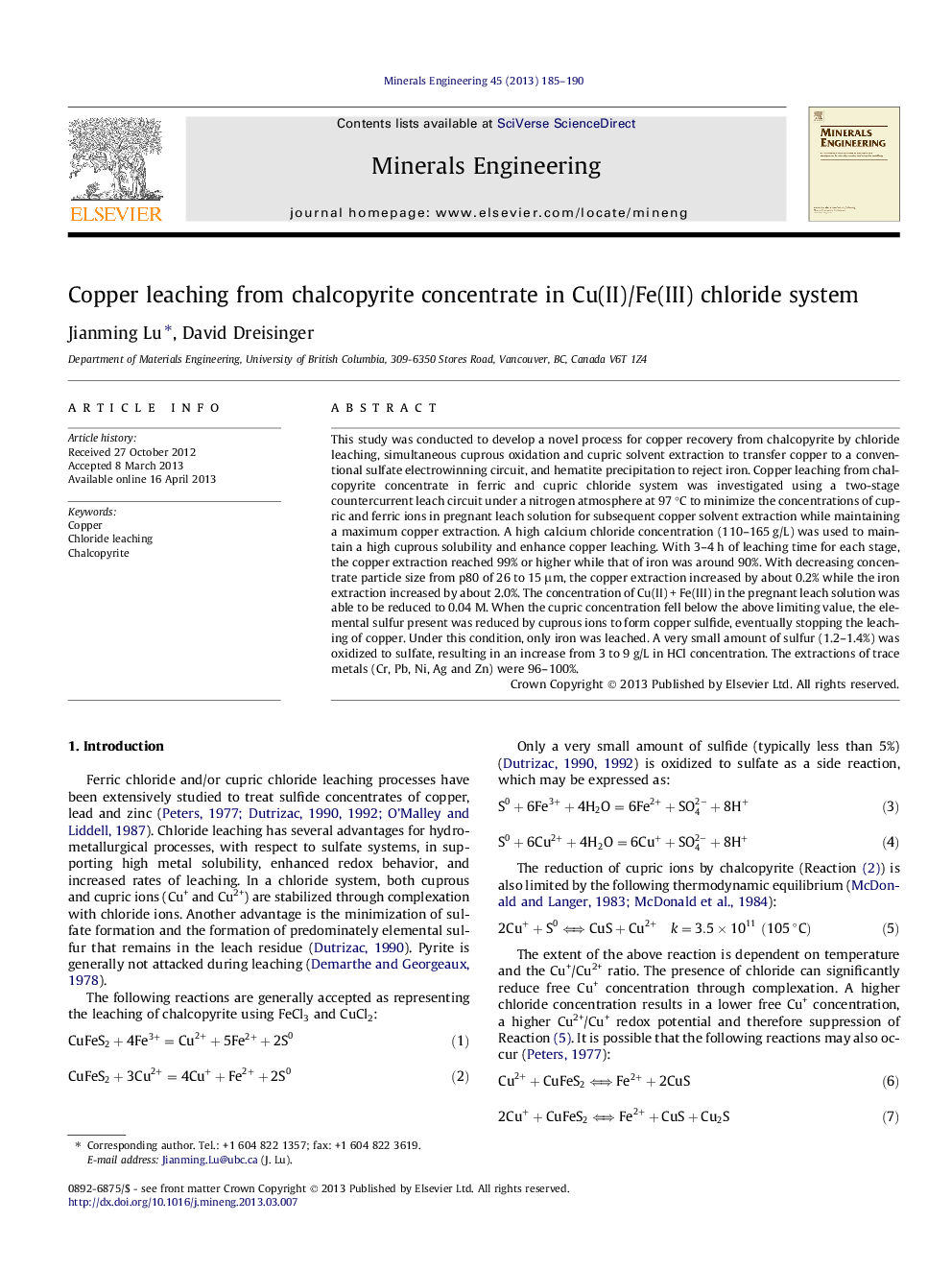| Article ID | Journal | Published Year | Pages | File Type |
|---|---|---|---|---|
| 6673764 | Minerals Engineering | 2013 | 6 Pages |
Abstract
This study was conducted to develop a novel process for copper recovery from chalcopyrite by chloride leaching, simultaneous cuprous oxidation and cupric solvent extraction to transfer copper to a conventional sulfate electrowinning circuit, and hematite precipitation to reject iron. Copper leaching from chalcopyrite concentrate in ferric and cupric chloride system was investigated using a two-stage countercurrent leach circuit under a nitrogen atmosphere at 97 °C to minimize the concentrations of cupric and ferric ions in pregnant leach solution for subsequent copper solvent extraction while maintaining a maximum copper extraction. A high calcium chloride concentration (110-165 g/L) was used to maintain a high cuprous solubility and enhance copper leaching. With 3-4 h of leaching time for each stage, the copper extraction reached 99% or higher while that of iron was around 90%. With decreasing concentrate particle size from p80 of 26 to 15 μm, the copper extraction increased by about 0.2% while the iron extraction increased by about 2.0%. The concentration of Cu(II) + Fe(III) in the pregnant leach solution was able to be reduced to 0.04 M. When the cupric concentration fell below the above limiting value, the elemental sulfur present was reduced by cuprous ions to form copper sulfide, eventually stopping the leaching of copper. Under this condition, only iron was leached. A very small amount of sulfur (1.2-1.4%) was oxidized to sulfate, resulting in an increase from 3 to 9 g/L in HCl concentration. The extractions of trace metals (Cr, Pb, Ni, Ag and Zn) were 96-100%.
Keywords
Related Topics
Physical Sciences and Engineering
Chemical Engineering
Chemical Engineering (General)
Authors
Jianming Lu, David Dreisinger,
